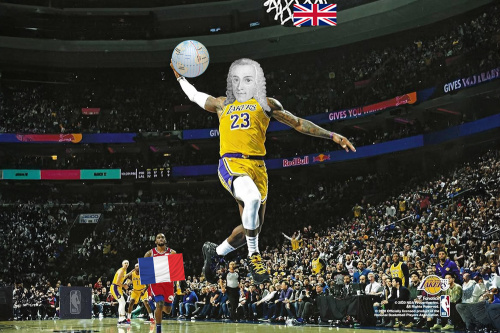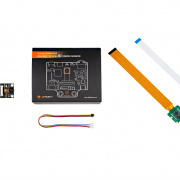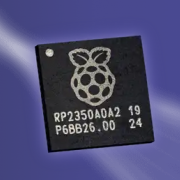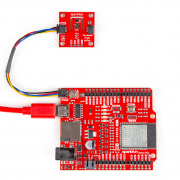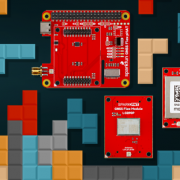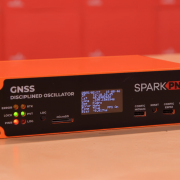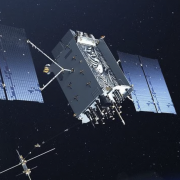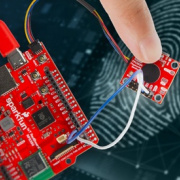The History of Timekeeping
Do you wear a watch? Imagine a world without it.
Starting with nothing but the sun, moon, and stars, humans have been getting a handle on time for centuries (including when they invented the concept of a century). Today we’re going to take a look at our species’ journey from sundial to the timing technology found in our newest PNT product, the GNSS Disciplined Oscillator, which can measure time with sub-nanosecond accuracy.
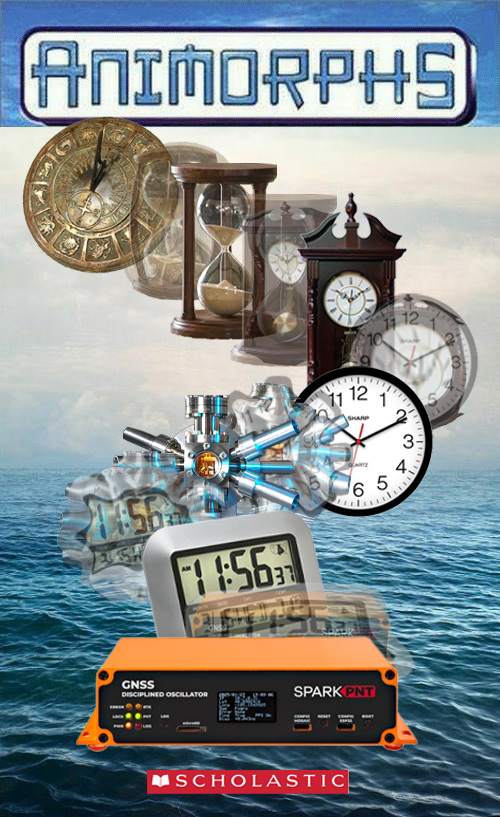
Early Human Engagement with Time
The earliest methods of measuring time were closely tied to natural patterns people could observe happening around them. The change from night to day, the change from summer to winter and then back again; these cycles were the first methods early humans used to keep time. Seasonal changes were critical for survival, influencing when to plant crops, hunt animals, or prepare for harsh weather. These changes were often marked by consistent and observable environmental shifts — such as the migration patterns of birds, the flowering of plants, or the first frosts. People who lived near water lived in sync with the rising and falling tides; a regular daily cycle that varies during the month depending on the position of the moon.

Ancient humans also noticed the patterns made by celestial bodies: the phases of the moon, the positions of stars and planets throughout the year, and the patterns of eclipses and solstices. It's easy for us to say that the structure of the solar system or the relationship between the Earth and Moon is common sense, but early humans were figuring all this stuff out from scratch. Imagine seeing a total eclipse without knowing the moon's relative position is what's blocking out the sun - you'd think the world was ending too!
Time was also a social construct, heavy with spiritual significance. Many prehistoric communities marked time not by minutes or hours, but by natural events and communal activities. Rituals, storytelling, and gatherings were often timed to line up with significant natural events, such as full moons, solstices or eclipses.
The lack of mechanical timekeeping during this era meant that people lived lives that were less segmented and scheduled than in modern times. Work, social activity, and rest were fluidly integrated with the demands of the environment and the community. This lifestyle fostered a different sense of time, one that was less about counting hours and more about living in harmony with the natural world.
The Invention of Timekeeping Devices
Continuous Timekeeping Devices
Sundials
Sundials, which date back to ancient Egyptian and Babylonian civilizations around 1500 BCE, provided a way to measure time based on the shadow cast by the sun. These devices divided the day into units, but depended entirely on the presence of sunlight, limiting their usefulness to daylight hours and clear weather conditions. They were made by attaching a triangular piece that pointed to the North Star to a circular base that had the hours marked on it. They were created in varying sizes, but the length of the shadow just depends on your latitude, and the angle of the shadow shows your time.
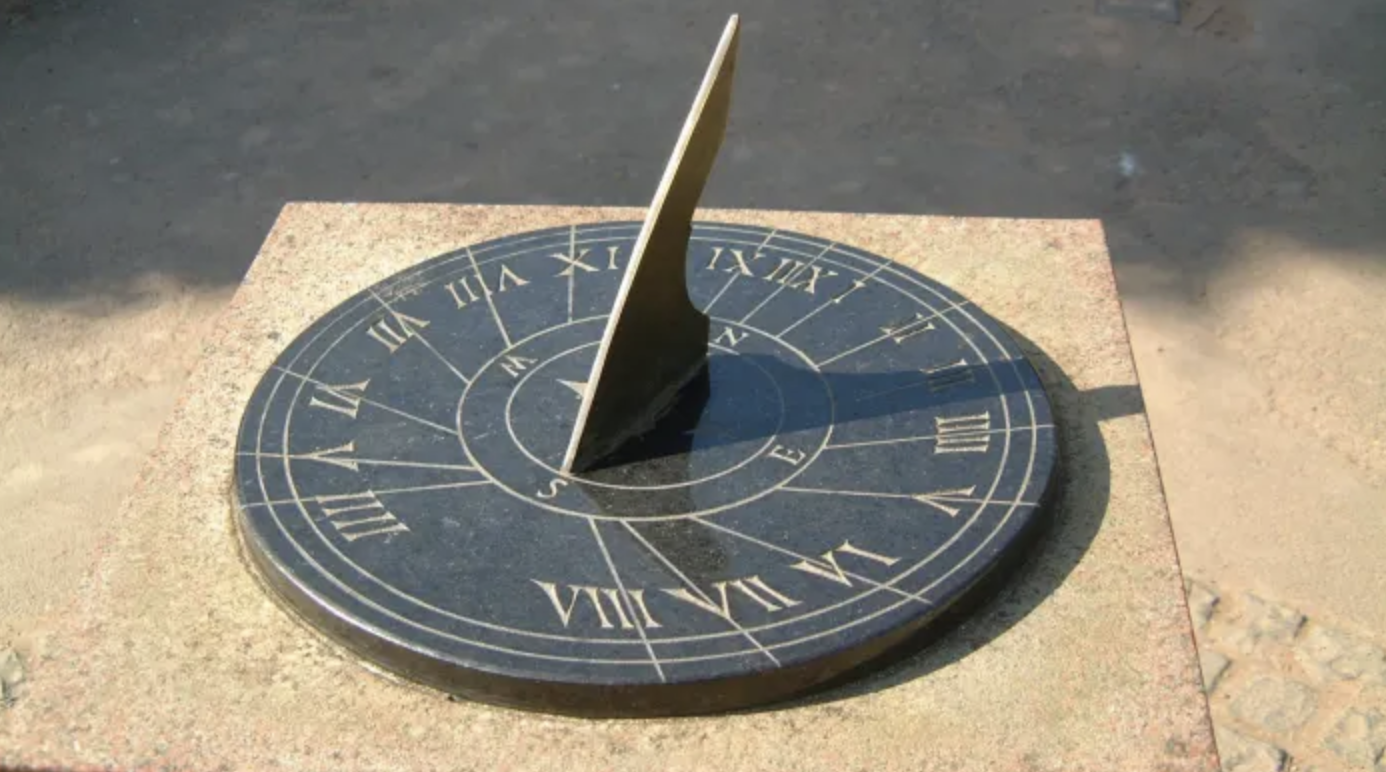
Fun fact: the concept of the sun casting a different length shadow at different latitudes was used by Greek mathematician Eratosthenes to estimate the curvature of the Earth within 2% of the currently accepted value. Over 2000 years ago. So uhhhh, any flat-earthers out there looking to "do your own research," go outside with a stick and a tape measure.
Water Clocks
To overcome the limitations of sundials, a few cultures developed water clocks, or clepsydras, which allowed for time measurement regardless of natural light. They measured time by a regular flow of liquid into or out of a vessel. Water clocks appeared in various forms across ancient civilizations, including Egypt, India, China, and Greece, each adding nuances and improvements. For example, in the 3rd century BCE, the Greek engineer Ctesibius of Alexandria incorporated gear-wheels and a dial indicator to show time more accurately in his water clocks, introducing a form of mechanization in time measurement.
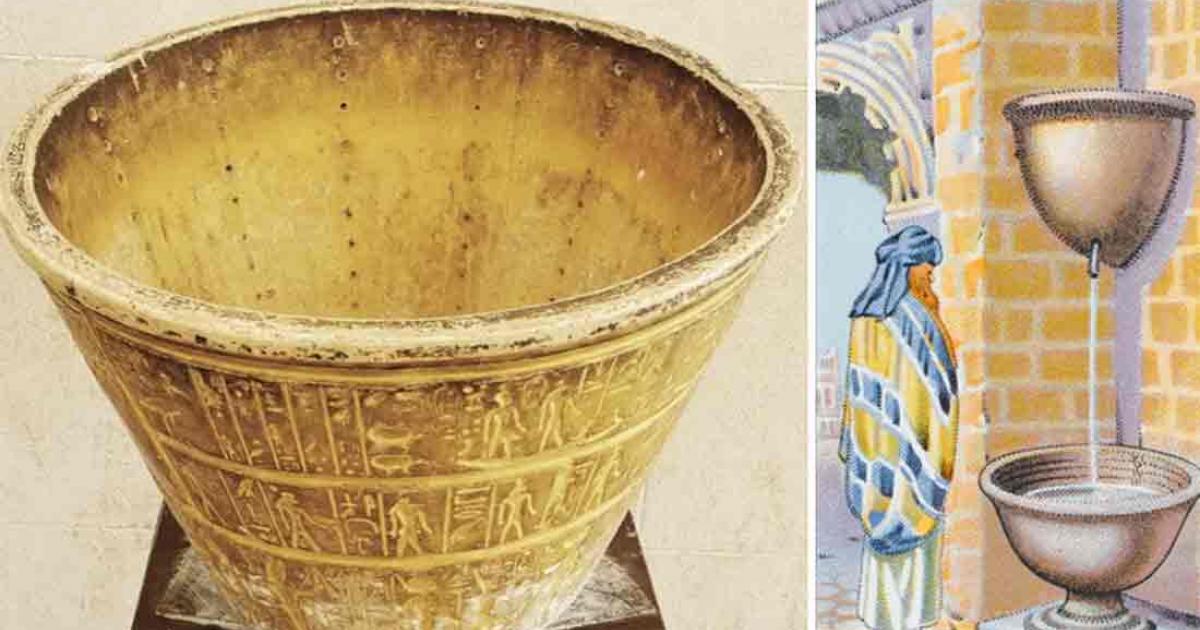
Incense Clocks
Originating in ancient China, incense clocks were a method of timekeeping that relied on the slow and consistent burning of specially designed incense sticks or powders. These clocks were often crafted with different scents that would release fragrances or trigger small bells at set intervals. They were commonly used in religious ceremonies, homes, and imperial courts, as they provided a silent and enjoyable way to measure time. Their use was especially valuable in Buddhist and Taoist temples, where monks relied on them for meditation and prayer sessions.
Astrolabes
First developed by Greek astronomers and later refined by Islamic scholars, the astrolabe was a sophisticated instrument used for determining time and celestial positioning. By aligning its rotating components with the positions of stars or the Sun, users could calculate local time, latitude, and even track stars or predict astronomical events.
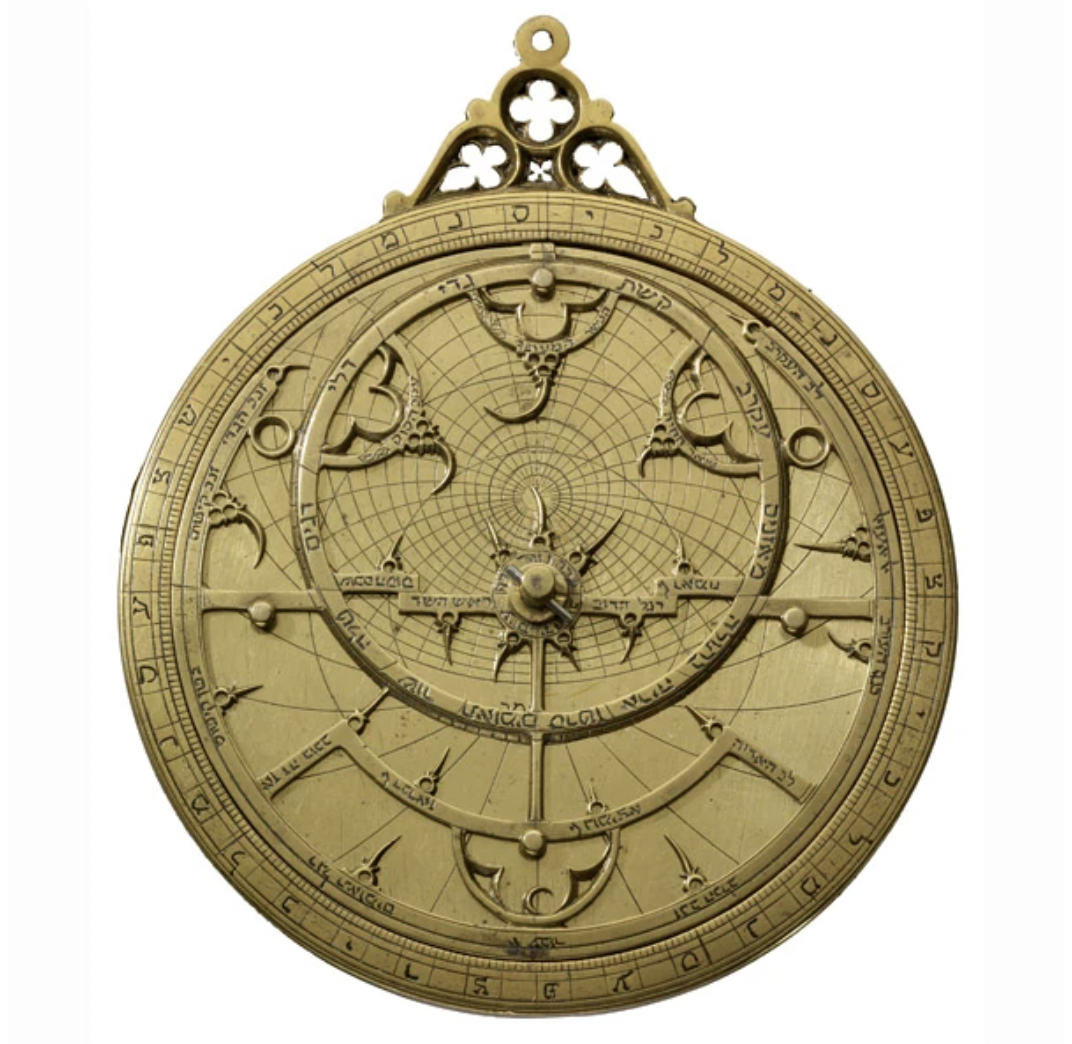
Astrolabes played a crucial role in navigation, particularly for sailors during the Age of Exploration, as they allowed for accurate sea travel before the development of more advanced timepieces. They were also used by scholars and scientists for astronomical observations, making them one of the most important scientific tools of the medieval world.
Candle Clocks and the First Alarms
Candle clocks were an early and practical way to measure time before mechanical clocks became widespread. They worked by marking candles at specific intervals and using the slow, consistent burning of wax to indicate the passage of time. Some variations included small metal pegs or nails inserted at set points in the candle, which would fall onto a metal plate when the wax melted to make a sound that acted as an alarm or reminder.
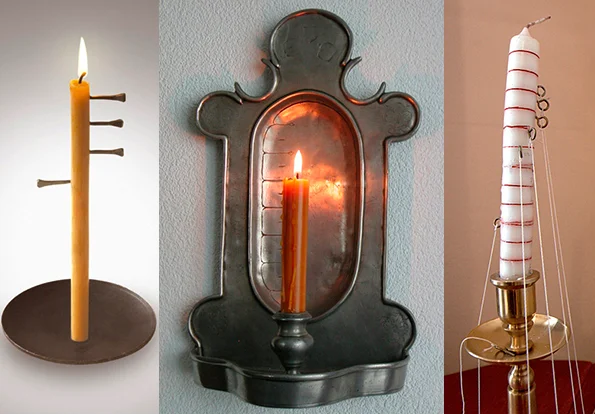
These clocks were especially useful in homes and monasteries, where monks used them for keeping track of prayer times at night. Their simplicity and reliability made them an effective timekeeping solution in regions where water clocks or mechanical devices were impractical.
Hourglasses
The hourglass, first documented in the 14th century, was a precise and reusable device consisting of two glass bulbs connected by a narrow passage. Fine sand inside the glass would flow from the top chamber to the bottom at a consistent rate, allowing users to measure short intervals of time accurately. Hourglasses were widely used aboard ships for navigation and timing ship duties, as they were unaffected by the movement of the sea.
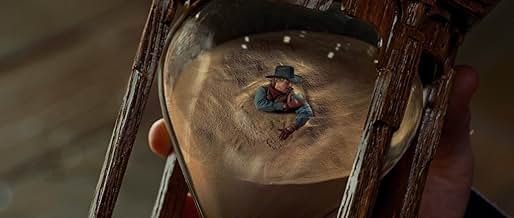
They also played a role in churches, where they helped regulate sermons, and in scientific experiments requiring precise measurements of short durations. Their durability and ease of use made them a valuable tool in an era before mechanical clocks became common.
Early Oscillating Clocks
Escapements
An escapement is a mechanism in mechanical clocks that regulates the release of energy to ensure accurate timekeeping. It controls the transfer of energy from a power source to the clock’s timekeeping element, allowing the gears to advance in a controlled and periodic manner. Essentially, the escapement ensures that the movement of the clock is steady and does not simply unwind all at once.
The earliest known escapement mechanism was the verge escapement, which appeared in medieval Europe around the late 13th century. This system consisted of a crown-shaped gear and a pair of pallets that oscillated back and forth, regulating the movement of the gear teeth. The verge escapement allowed for the creation of the first mechanical clocks, which were mostly found in church towers.
Later improvements led to the anchor escapement, developed in the 17th century, which significantly increased accuracy by reducing friction and enabling the use of the pendulum for timekeeping. This innovation, attributed to either Robert Hooke or William Clement, allowed clocks to achieve much greater precision, leading to the development of longcase (grandfather) clocks.
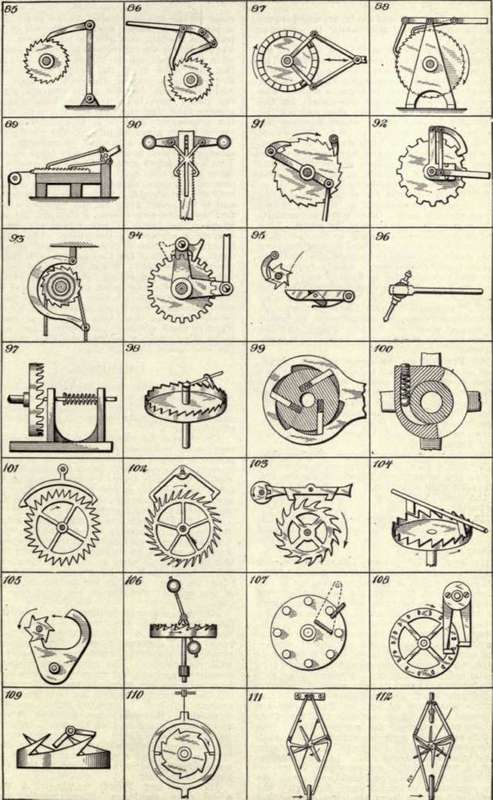
The escapement mechanism continued to evolve, with later advancements such as the detent escapement (used in marine chronometers) and the lever escapement (used in modern wristwatches), each improving accuracy and efficiency. The invention of the escapement was a fundamental breakthrough in horology, transforming timekeeping from rudimentary devices into precise, mechanical instruments.
Pendulum Clocks
A pendulum clock is a type of clock that uses a swinging pendulum as its timekeeping element. The regular, rhythmic motion of the pendulum regulates the movement of the clock’s gears, making it significantly more accurate than earlier mechanical timepieces. Pendulum clocks remained the most precise timekeeping devices from their invention in the 17th century until the development of quartz and atomic clocks in the 20th century.
The invention of the pendulum clock is credited to the Dutch scientist Christiaan Huygens, who designed the first working model in 1656. Huygens was inspired by Galileo Galilei, who had observed the regular motion of pendulums in the early 1600s and theorized their potential use for timekeeping. However, Galileo did not complete a working pendulum clock before his death.
Huygens' design featured an anchor escapement, which allowed the pendulum to drive the movement of the clock’s gears with high precision. His pendulum clock drastically improved timekeeping accuracy, reducing errors to within a few seconds per day -- far superior to earlier verge escapement clocks, which could be off by several minutes per day.
Pendulum clocks became widespread in homes, churches, and observatories, leading to further refinements such as grandfather clocks and precision regulator clocks, which were used for astronomical observations. Although eventually replaced by more advanced technologies, the pendulum clock revolutionized timekeeping and laid the foundation for modern precision clocks.
Precision Timekeeping
Marine Chronometer
The development of the marine chronometer was driven by the longitude problem, a major navigational challenge ships faced in the 17th and 18th centuries. While latitude can easily be determined using celestial navigation, sailors had no precise method for measuring longitude, which required an accurate time reference.
In 1714, the British government established the Longitude Act, offering a reward of up to £20,000 to anyone who could devise a reliable method for determining longitude at sea. Tobias Mayer, a German astronomer, devised a series of calculations that used the moon as a reference and were able to accurately devise longitude. The board claimed the calculations took too long so they didn't give him the award, although his widow eventually won it after a long battle for recognition after his death.
A breakthrough in the form of a mechanical device came from John Harrison, an English clockmaker who spent over three decades designing a solution: the marine chronometer. Harrison developed a series of timepieces with his final model, H5 (1770), proving accurate even under the harsh conditions of sea travel.
His innovations included:
- Temperature-compensated balance wheels to prevent expansion or contraction from affecting accuracy.
- Friction-reducing materials to maintain precision over long periods.
- A high-frequency oscillating balance wheel, replacing the pendulum (which was impractical on a rocking ship).
Harrison’s marine chronometers enabled sailors to determine their longitude by comparing the local solar time to the reference time on the chronometer. This invention improved navigation, reducing shipwrecks and boosting global trade and exploration. By the early 19th century, the marine chronometer became an essential tool on all major naval and merchant ships, laying the foundation for modern GPS-based navigation.
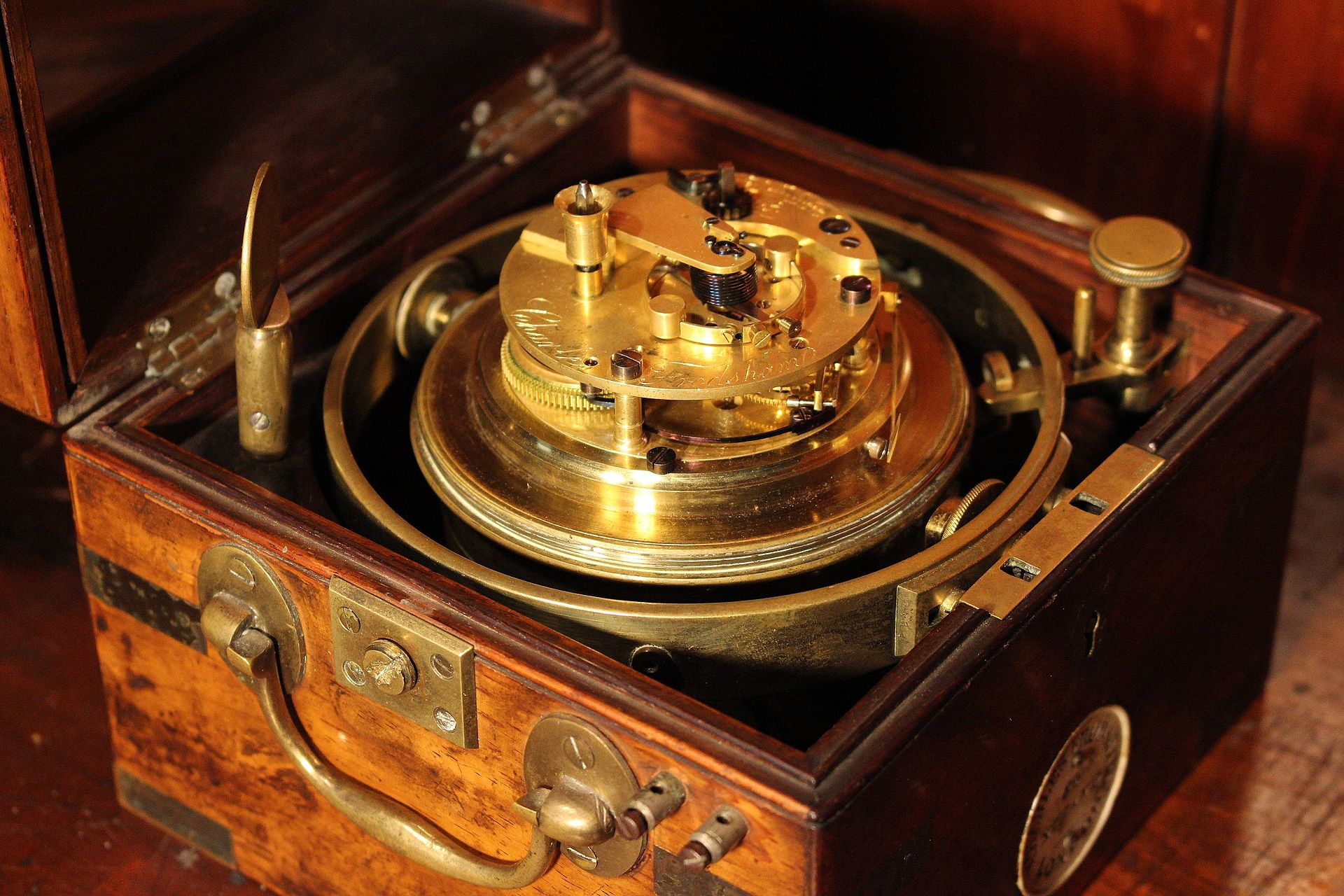
Electrical Clocks
Electrical clocks, which used electricity to power the clock mechanism, offered greater accuracy and needed less maintenance than mechanical clocks, and marked a huge leap forward in timing technology.
The first major breakthrough came in 1841, when Scottish inventor Alexander Bain developed a clock that used electricity to drive its pendulum and gear train. Unlike mechanical clocks, which required frequent winding, Bain’s design used an electric impulse to keep the pendulum swinging, making it more efficient and reducing timekeeping errors caused by mechanical friction.
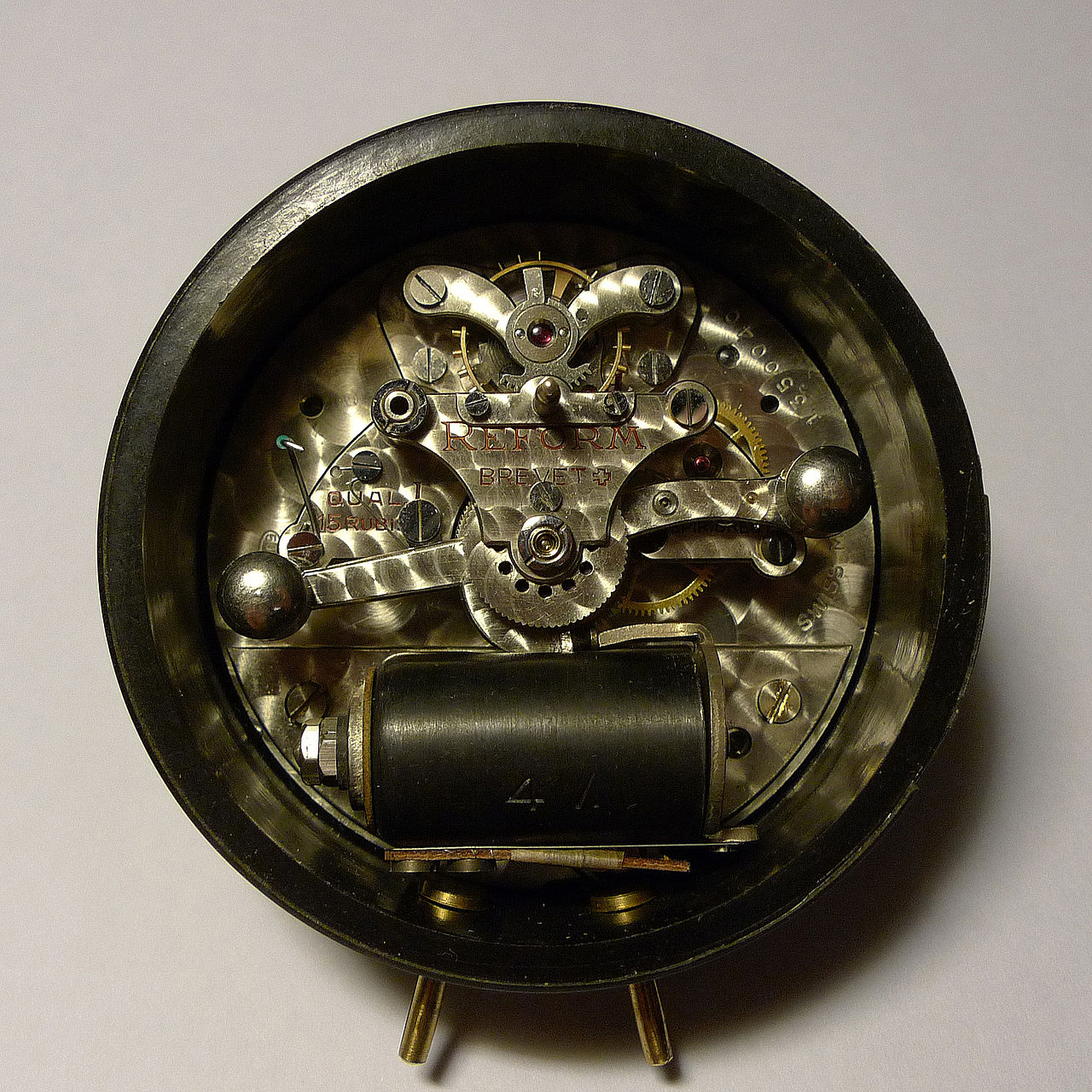
Over the next few decades, electrical clocks became more sophisticated, leading to synchronization systems that allowed multiple clocks in different locations to stay perfectly in sync. By the early 20th century, these synchronized electrical clocks were widely adopted in railway networks, factories, and broadcasting stations, where precise timing was essential.
Quartz Clocks
The most revolutionary advancement in electrical timekeeping came in 1927, when Warren Marrison, a Canadian engineer, invented the quartz clock. Instead of using a pendulum, the quartz clock relied on the vibrations of a quartz crystal when subjected to an electrical charge.
Quartz was a great material to use for timekeeping for a few reasons: its size does not change much under temperature fluctuations, and it has pizoelectric properties, which means it can oscillate when affected by an electric current. In nearly all quartz clocks and watches, this frequency is 32768 Hz.
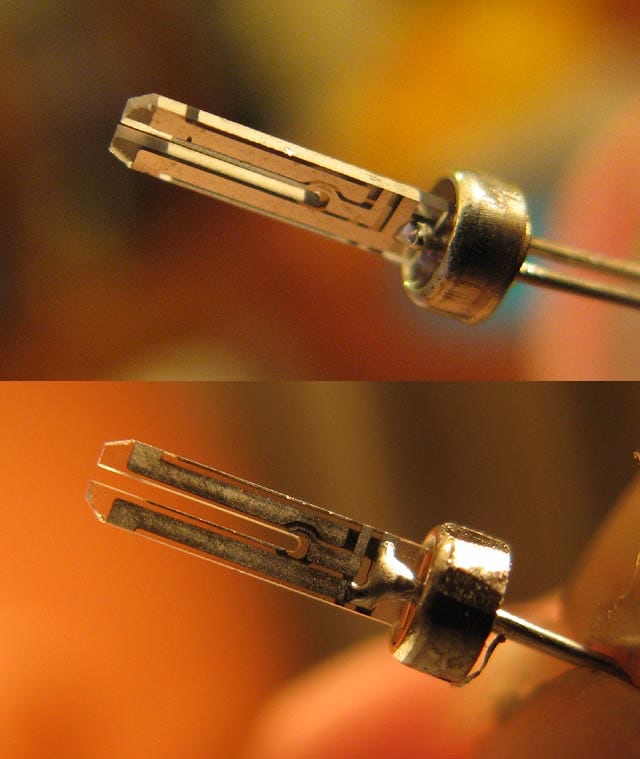
When you hear "crystal" you might think your watch has a tiny version of those crystals you see people wearing (and leaving out to charge under the full moon), but that's not entirely the case. "Crystal" refers to the molecular structure of the quartz, but it's cut into a tuning fork shape at a very small scale.
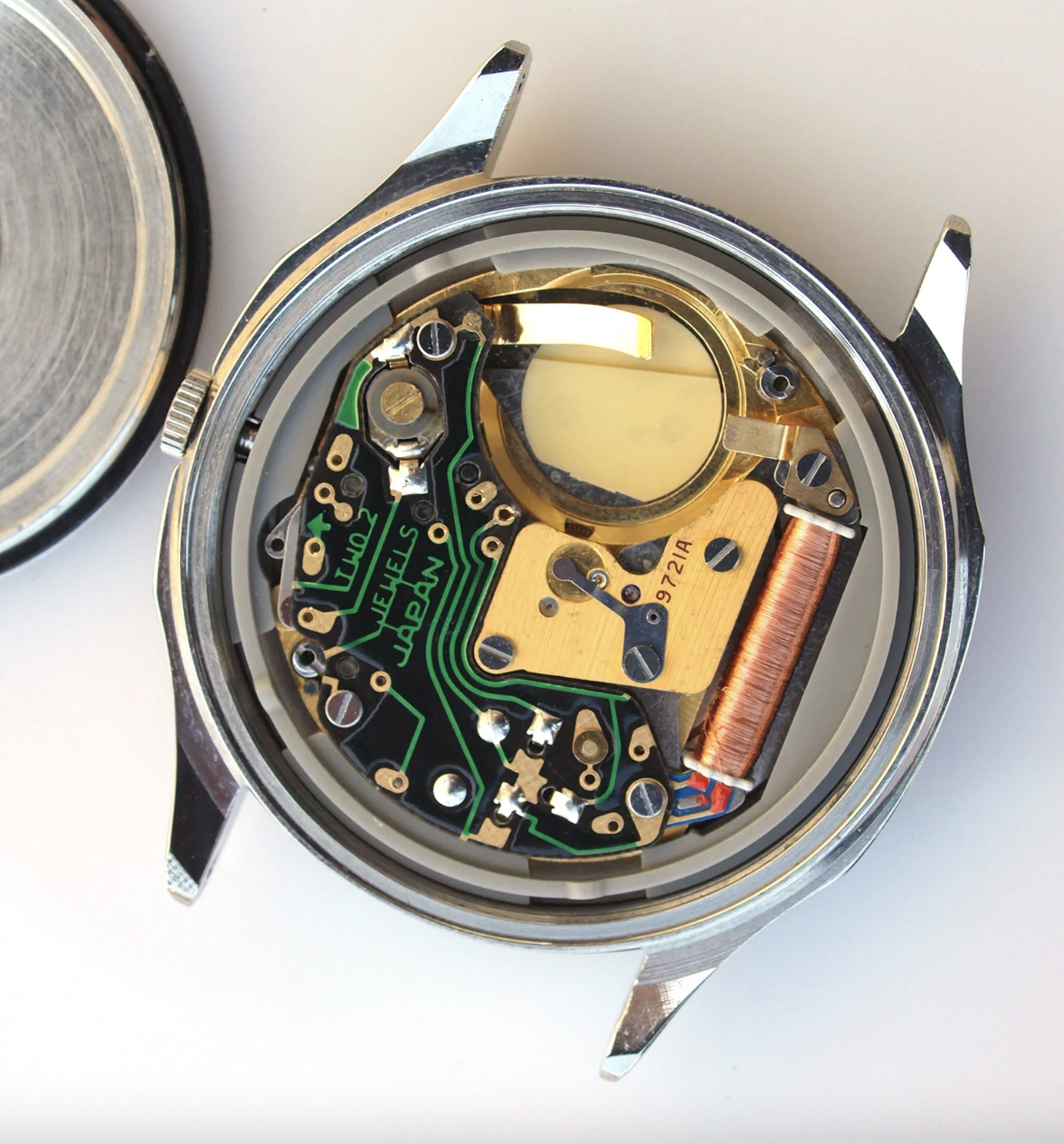
These vibrations were found to be incredibly stable and allowed for a level of precision that far exceeded mechanical clocks. Quartz technology paved the way for modern digital clocks, atomic clocks, and are present in most wristwatches nowadays.
Atomic Clocks
Quartz clocks were pretty accurate, but still lost a few seconds every month, which adds up over time. Something more accurate was needed as science and technology advanced, and the atomic clock was born.
Atomic clocks came into being as a result of advancements in quantum mechanics, which allowed physicists to understand and manipulate the properties of atoms at different energy levels. They can be so accurate that a clock will lose less than a second over millions of years. The first atomic clock was developed in 1949 by Dr. Harold Lyons, a physicist. This clock used an ammonia absorption cell to drive the frequency of a quartz oscillator.
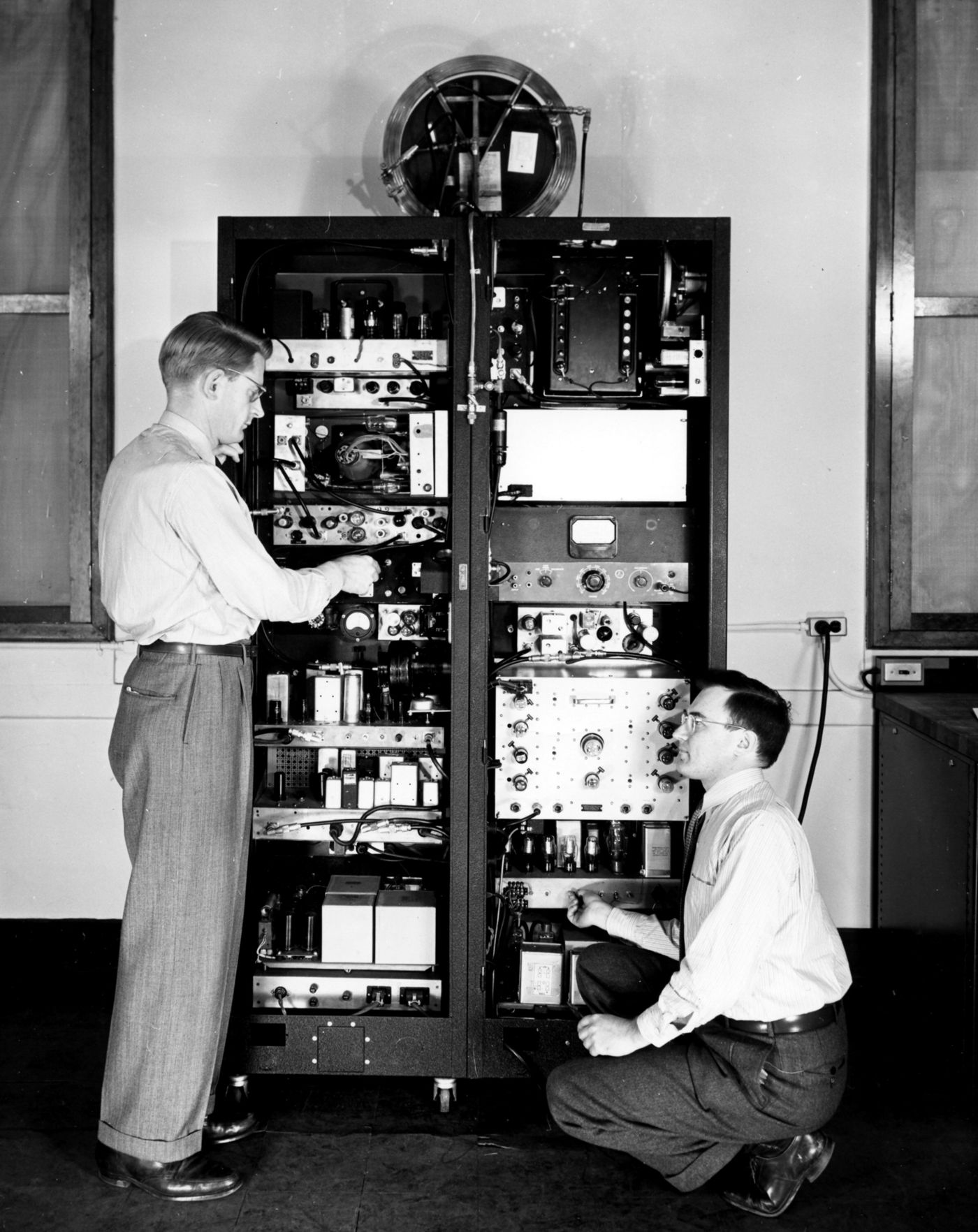
Atomic clocks function by measuring the precise frequency of microwaves needed to induce a particular energy state transition in atoms. The most common type of atomic clock today uses cesium atoms, specifically the transition between two energy states in the cesium-133 atom.
Cesium-133 is perfect for this application for a few reasons. It has one free electron in it's outermost energy level, which means it can be excited by a very specific and very regular frequency. It can also be vaporized at low temperatures, which is needed for the interior of the clock to work properly.
When cesium-133 atoms are exposed to microwaves of a very precise and consistent frequency, they undergo a predictable change in energy levels. The state of the atoms is detected inside the clock, and whether or not they are excited tells the clock if the microwave frequency is correct.
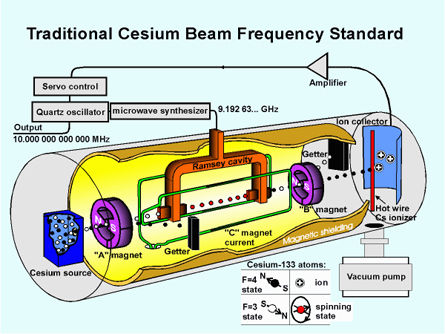
In simpler terms, atomic clocks do not actually count seconds, they create them. In the case of cesium atomic clocks, this frequency is exactly 9,192,631,770 cycles per second - a resonant frequency of cesium-133. This precise measurement is so reliable that in 1967, the International System of Units (SI) redefined the second based on this property of cesium-133.
By producing a constant, measurable frequency that corresponds to the second, these devices ensure global synchronization that impacts everything from your smartphone to the infrastructure that governs global navigation and communication. This level of precision is not just about keeping accurate time — it is about creating a framework upon which much of our modern technology relies.
Timing and GNSS
Every GNSS satellite has multiple on-board atomic clocks that are keeping perfect time while taking into account the relativistic effects they're experiencing. This means that GNSS can provide time in addition to latitude, longitude, and altitude.
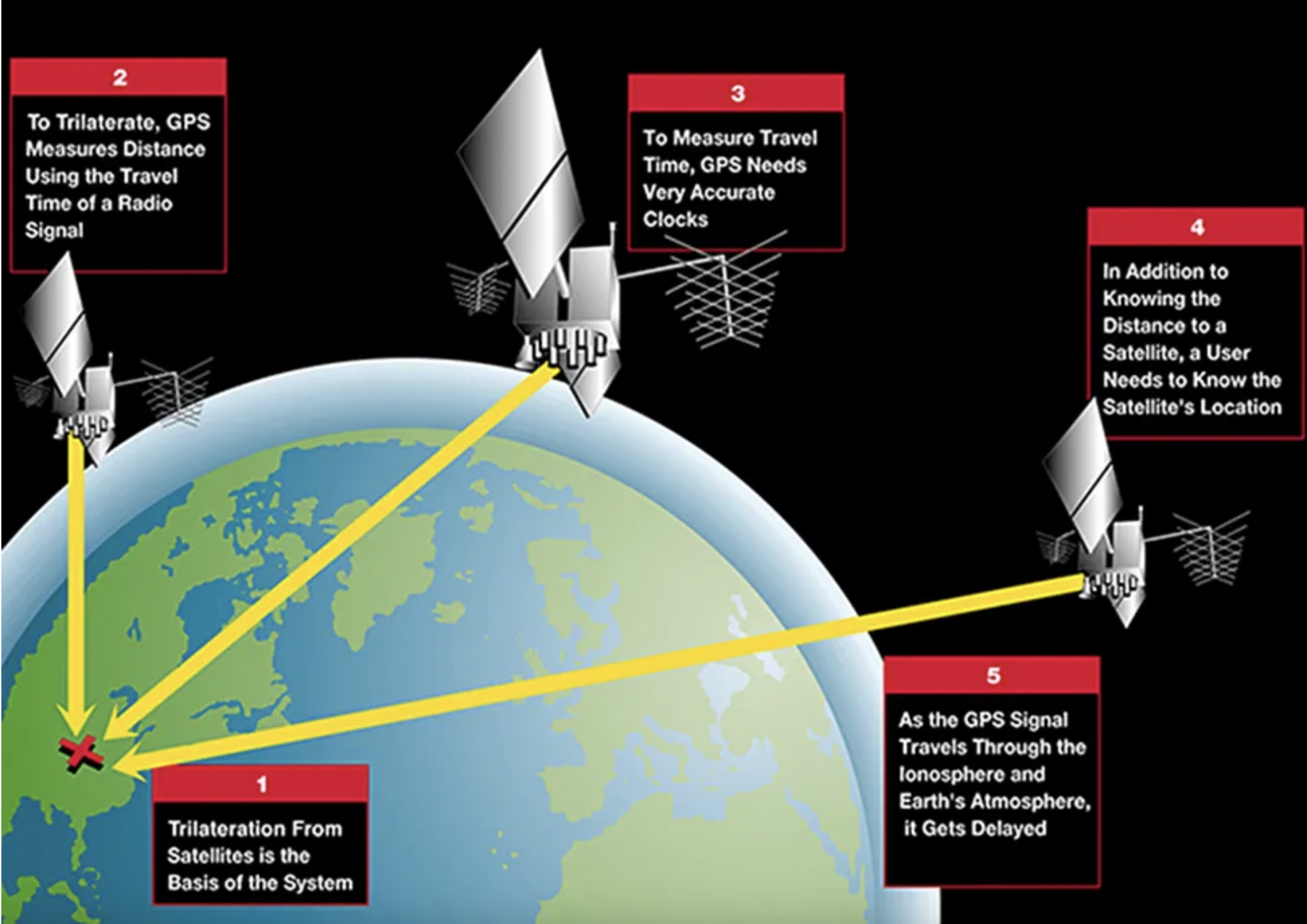
Time is also how GNSS works - it uses what is called trilateration to determine your location. It measures the time it takes for a signal to travel from your location to several nearby satellites. Without exact and synchronous time, precise positioning isn't possible.
The GNSS Disciplined Oscillator uses the time data from GNSS satellites to steer an ultra-precise quartz oscillator inside the device, which can get accuracy under a nanosecond. GNSS has a natural resolution of about 20 ns. At 5 ns, you start to rely on your local oscillator to do further filtering. With the GNSSDO, you're able to do this with high precision.
Measurements and Standards
The Origin of Units
Hours, minutes, seconds... these units didn’t just appear out of thin air. The second existed before we measured cesium at the atomic level - now we've just standardized it. The practice of dividing the days into segments was common in the ancient world, and there were many different systems in use for it. Ancient Egyptians divided the night and day into 12 segments each, which varied in length with the changing of the seasons. They used a sundial to track the daytime, then used a set of 12 stars in the night sky to track the passage of time overnight.
Why 12? There are multiple theories for this, but it most likely was a combination of both. There are 12 lunar cycles in a year, and you can also count to 12 on one hand using each finger joint of the four fingers. Making daytime and nighttime hours equal in duration didn’t catch on until the 14th century.
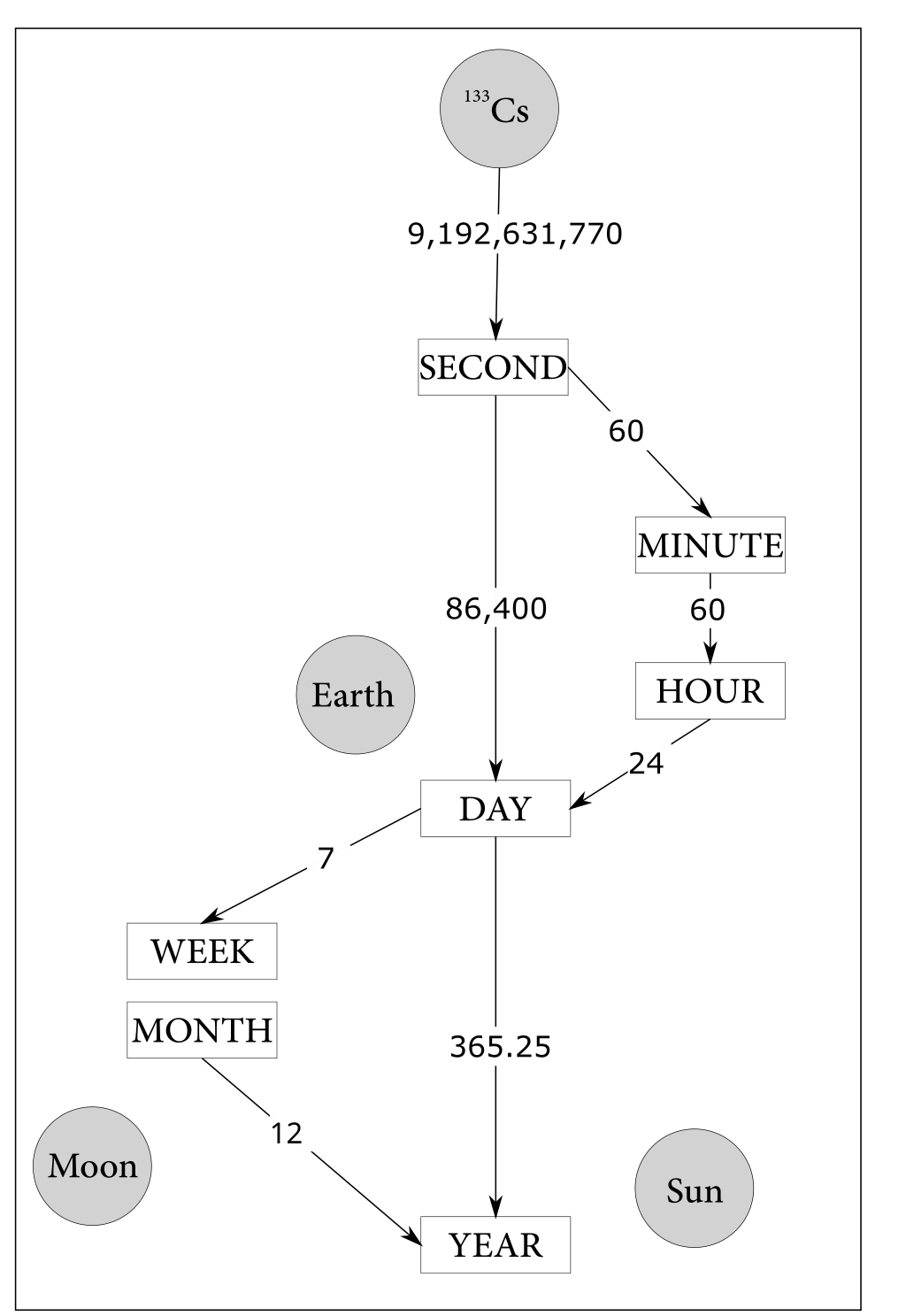
What about the smaller divisions of time? The Babylonians used a base 60 number system for astronomy, which is where the minutes and seconds of astronomical degree measurement come from, as well as minutes and seconds of time. The number 60 is extremely convenient mathematically, divisible by 1, 2, 3, 4, 5, 6, 10, 12, 15, 20, and 30. The word “minute” in latin means “first small part.” As you can probably guess, “second” means “second small part.” This convention caught on and is how we still measure not only time, but degrees.
Time Standardization
Everywhere on Earth has a local mean time, which is the solar time at a nearby meridian. If you’re a few miles east of someone else, technically you’re going to be halfway through the Earth’s daylight hours (what some may call noon) slightly before they are. If you’re one degree of latitude east of someone else, you’ll see the sun rise 4 minutes before they would. Until time zones were introduced in the 19th century, cities or towns kept their own meridian time, which meant neighboring towns could have times that differed from each other by 4 minutes.
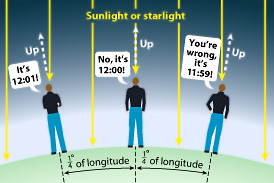
Most scientific advancements throughout American history boil down to the military or the railroad, and time zones are no exception - this system-of-chaos time wasn’t good for the railroad. While solar time is still used for astronomy and navigation, crossing great distances on a regular schedule with multiple stops needed something more streamlined.
Until 1883, each US railroad line chose its own time standard, with telegraph offices along the lines receiving time signals. Most lines from New York used New York time, most lines from Chicago used Chicago time, and all the rail lines across the continent were loyal to different time standards. This was confusing.
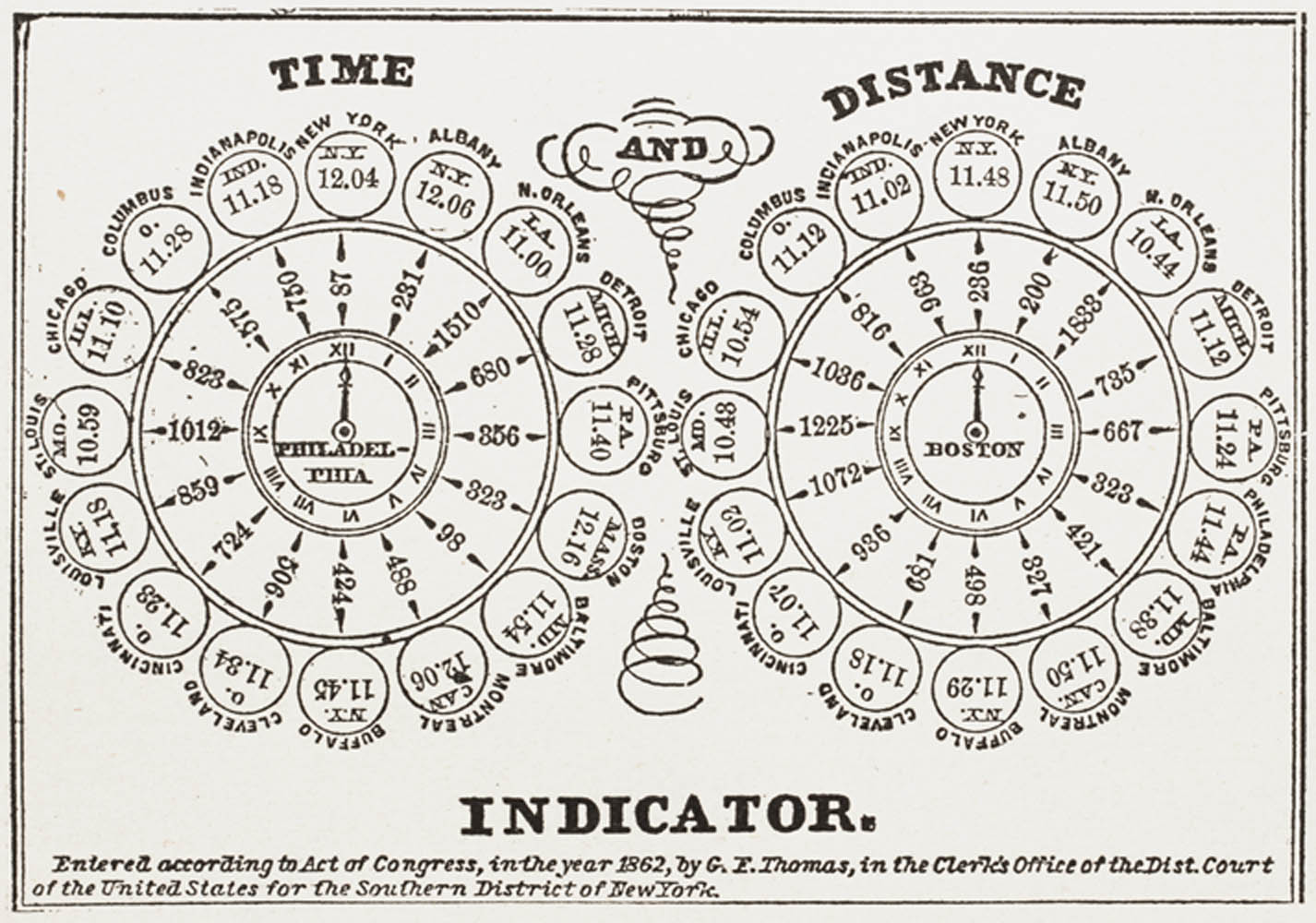
In 1870, teacher Charles F. Dowd proposed time zones across the North American continent, first based off of a meridian through Washington D.C., then revised to work around Greenwich Mean Time. These proposed zones spanned 15 degrees of longitude, which converts to an hour (sound familiar? timezones!).
An organization of railroad leadership agreed to his proposal, and on Sunday, November 18, 1883, all United States and Canadian railroads would readjust their clocks and watches to reflect the new five-zone system on a telegraph signal from the Allegheny Observatory in Pittsburgh at exactly noon on the 90th meridian.

Dowd was honestly kind of just a guy, so this is an inspirational tale of the everyday person working to make infrastructure better and making their ideas heard. Standard time didn’t exist in US law until 1918, which means it was clearly more pressing of an issue than the constitutional amendment that allowed some women to vote (1919). Ha.
Coordinated Universal Time (UTC) is a globally standardized system that describes the offset of each region or zone’s solar time to the meridian that passes through Greenwich, England (GMT). This meridian was chosen at the International Meridian Conference of 1883 (oh, to be a fly on the wall!).
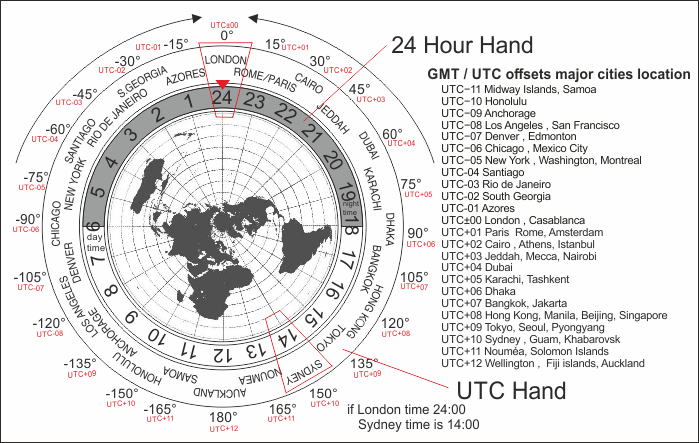
UTC is based on a weighted average of hundreds of atomic clocks worldwide, and is within about one second of mean solar time at 0° longitude. UTC is used as the international standard for scientific use as well, so things like astronomical observations or time stamps on GPS transmissions are in UTC (and can be converted to local time with software).
Timekeeping Corrections
We’ve clearly done a lot of work making sure time is measured as accurately as possible, but there are things we have to account for and changes we need to make to our definition and estimation of time to account for new discoveries and inaccuracies.
Leap year happens once every four years (except on years divisible by 100, unless they are also divisible by 400, for some reason), and exists because our orbit around the sun isn’t exactly 365 days. The astronomical year is a little less than 365.25 days, so if we add a day every four years we can stay on track with our planet’s orbit.
Similarly, leap seconds are single seconds occasionally added to UTC time to account for discrepancies between observed solar time and International Atomic Time. The leap second was first introduced in 1972. Since then, 27 leap seconds have been added to UTC, the most recent occurring on December 31, 2016. All have so far been positive leap seconds, adding a second to the end of a UTC day. The Earth's rotational speed varies in response to climatic and geological events, so UTC leap seconds aren’t spaced regularly and can’t be predicted. Adding a leap second is usually decided about six months beforehand by the International Earth Rotation and Reference Systems Service (IERS). Another fun acronym!
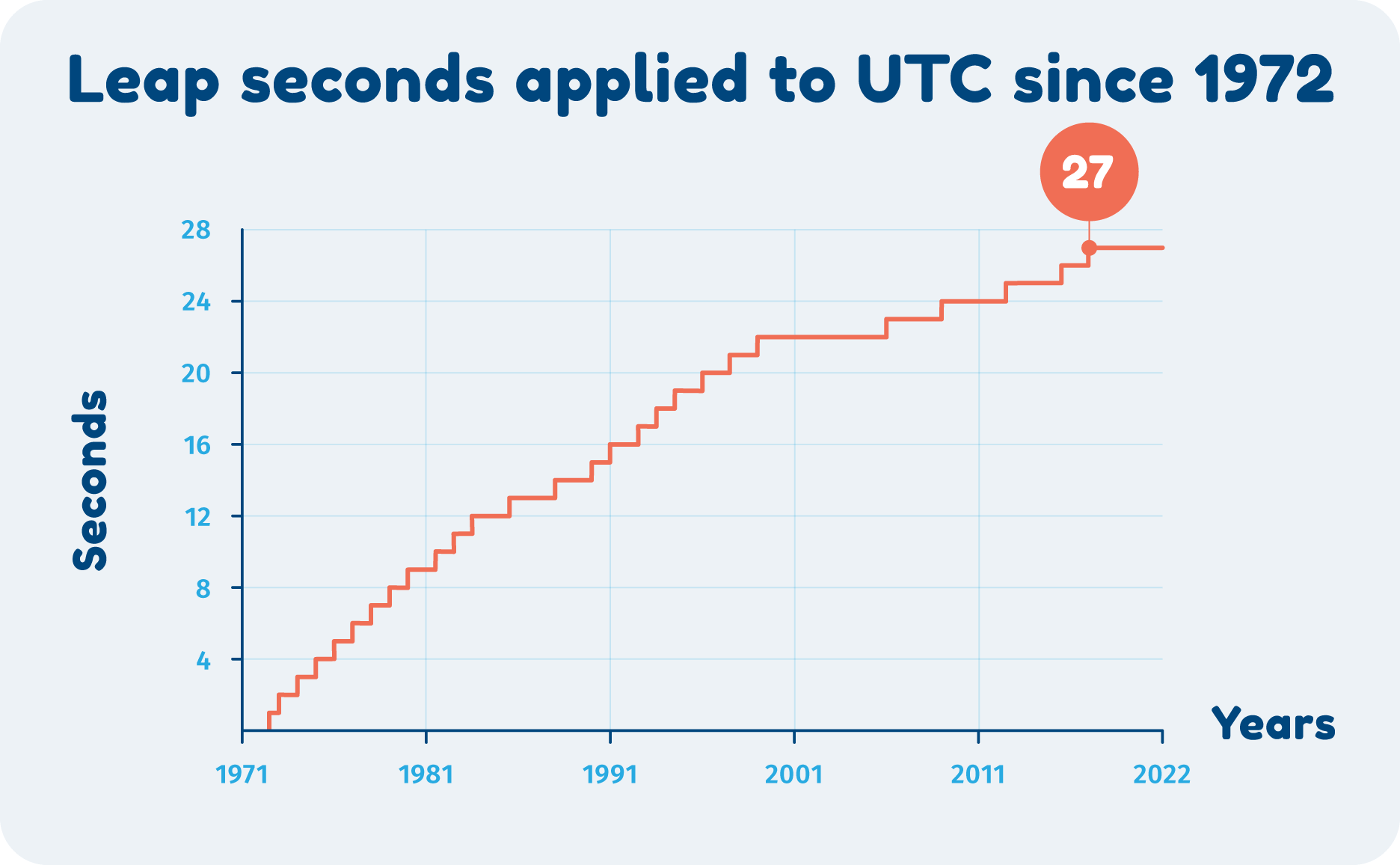
GPS satellites also have to correct for relativistic effects on time - both due to speed and gravity. A clock in motion will tick more slowly than one at rest, as will a clock closer to a large body of mass. With both special and general relativistic dilation together, GPS clocks experience about 38 extra microseconds a day - not much, but that’ll add up. Without correcting this, GPS position data errors of 11km per day could accumulate.
To keep time properly for an on-Earth reference frame, the frequency of the satellite clocks is set lower by 0.0045674 Hz in what’s called “factory offset”, where the frequency of a satellite clock is set to 10.22999999543 MHz so that it will tick in orbit at the same rate as a 10.23 MHz atomic standard at sea level on Earth.
Who Keeps Time?
This is a lot of information to keep track of. So, who manages this stuff?
As mentioned above, the International Earth Rotation and Reference Systems Service (IERS) controls the international coordination of time by measuring solar time and combining it with International Atomic Time to create UTC. The IERS tries to keep UTC and Universal Time within 0.9 seconds of each other.
The U.S. Department of Transportation (DOT) oversees the United States' time zones and Daylight Saving Time. The DOT's secretary of transportation, in coordination with the states, determines which regions observe which time zones and if they observe Daylight Saving Time.
The National Institute of Standards and Technology (NIST) is responsible for maintaining the United States' official time in coordination with the U.S. Naval Observatory. NIST does this by building and operating the country's most accurate atomic clocks, which help set UTC. NIST then provides time to the nation and the world via the internet and radio. If you have a watch that says it's an atomic clock, more likely than not it's just getting the radio signal of the current time sent out from NIST.
Further Reading
- Wikipedia: History of Timekeeping Devices
- The History of CLocks
- Ancient Timekeeping
- How Stuff Works: The Astrolabe
- Scientific American Reference Book: Escapements
- Wikipedia: History of Longitude
- GPS.gov: Timing
- CuriousMarc: Inside an Atomic Clock
- Septentrio: How GPS Brings Time to the World
- GPS and Time Dilation
- How Measuring Time Shaped History
- How the Rise of Railroads Ushered in an Era of Time Zones
- Wikipedia: Coordinated Universal Time
- NIST: Time and Frequency
